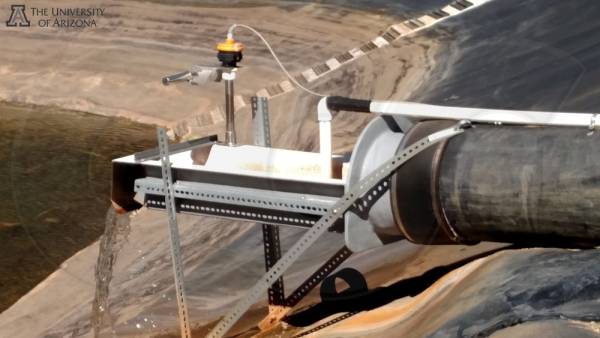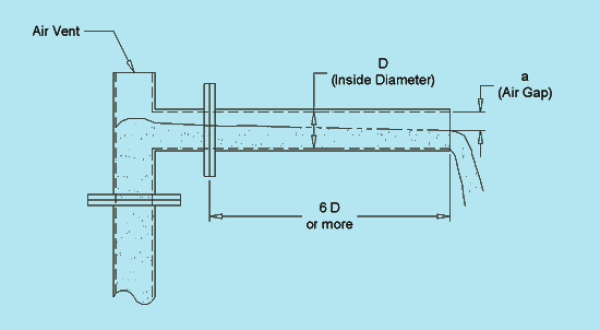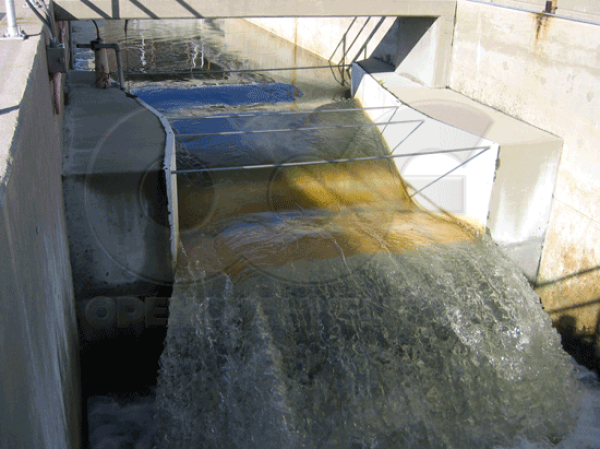This website uses a variety of cookies, which you consent to if you continue to use this site. You can read our Privacy Policy for
details about how these cookies are used, and to grant or withdraw your consent for certain types of cookies.
Measuring Free-Spilling Pipe Flow with Montana Flumes
Like H flumes, on free-spilling discharges from pipe where more accuracy (+/- 3-5%) is needed that the California Pipe Method can supply (+/-10%), Montana flumes can be used to for accurate flow measurement.
Unlike the California Pipe Method which uses the pipe itself as the flow measurement structure, the H flume is attached to the end of the pipe and the water is metered in it before it spills off the end. The drawback to this approach is that space is required after the end of the pipe to allow the flume to be installed. In space constrained applications, other flow measurement approaches must be used.
The Montana flume is based upon the popular Parshall flume, but with the throat and energy recovery discharge sections removed. The flume is about half the length of a Parshall (which can also be used to measure free-spilling end of pipe flow), making it the most compact of the short throated flumes when measuring flows in applications like this. Even with a reduced length approach section (3D long), the Montana flume is shorter than a H flume installation and the flume still provides similar flow accuracies.

The typical arrangement is the pipe (straight and level for at least 15 pipe diameters), the inlet end adapter with pipe stub or flange, and then the flume itself.
When mounting the flume, it is no sufficient to secure to the flume to the end of the pipe alone, other support must be installed under the flume.
While not quite as flexible as the H flume when it comes to pipe stub / flume size flexibility, a Montana flume can generally be sized to the flow rate of the pipe without undue worry about the flumes ability to accommodate a sufficiently large pipe stubs. Typically, only those applications where the flow rate is very small in comparison to the pipe size do problems of adapting the pipe to the flume occur.
Related Blog Posts
Explore more insights in our blog.

LOCATIONS IN ATLANTA, GA & BOISE, ID




